“This is the most dangerous event for spectators,” announced a man sitting down in a lawn chair wielding a microphone. Quickly, I nestled myself behind a tree shielding my body as my head stretched around the corner to press the shutter release on my mounted camera as a man of Herculean proportions launched an Ancient hammer into the air.

This was my best attempt to capture photos and video at the New Brunswick Highland Games, an event held annually on the historic Government House grounds of the capital city of Fredericton, Canada.
source: Nomadic Samuel and That Backpacker via Samuel and Audrey YouTube channel
Audrey and I were thrilled to cover this event which celebrates Scottish and Celtic culture and heritage. There was drumming, piping, dancing, singing and athletics. Men, nearly twice my size in weight, wearing kilts grabbed heavy objects grunting and groaning before hurling them impressive distances. Overall, it was an event that was truly a spectacle.
The games were divided into five sections throughout the Government House grounds: Athletics Field, Parade Square, Highland Dance Tent, Workshop Tents and Entertainment section.
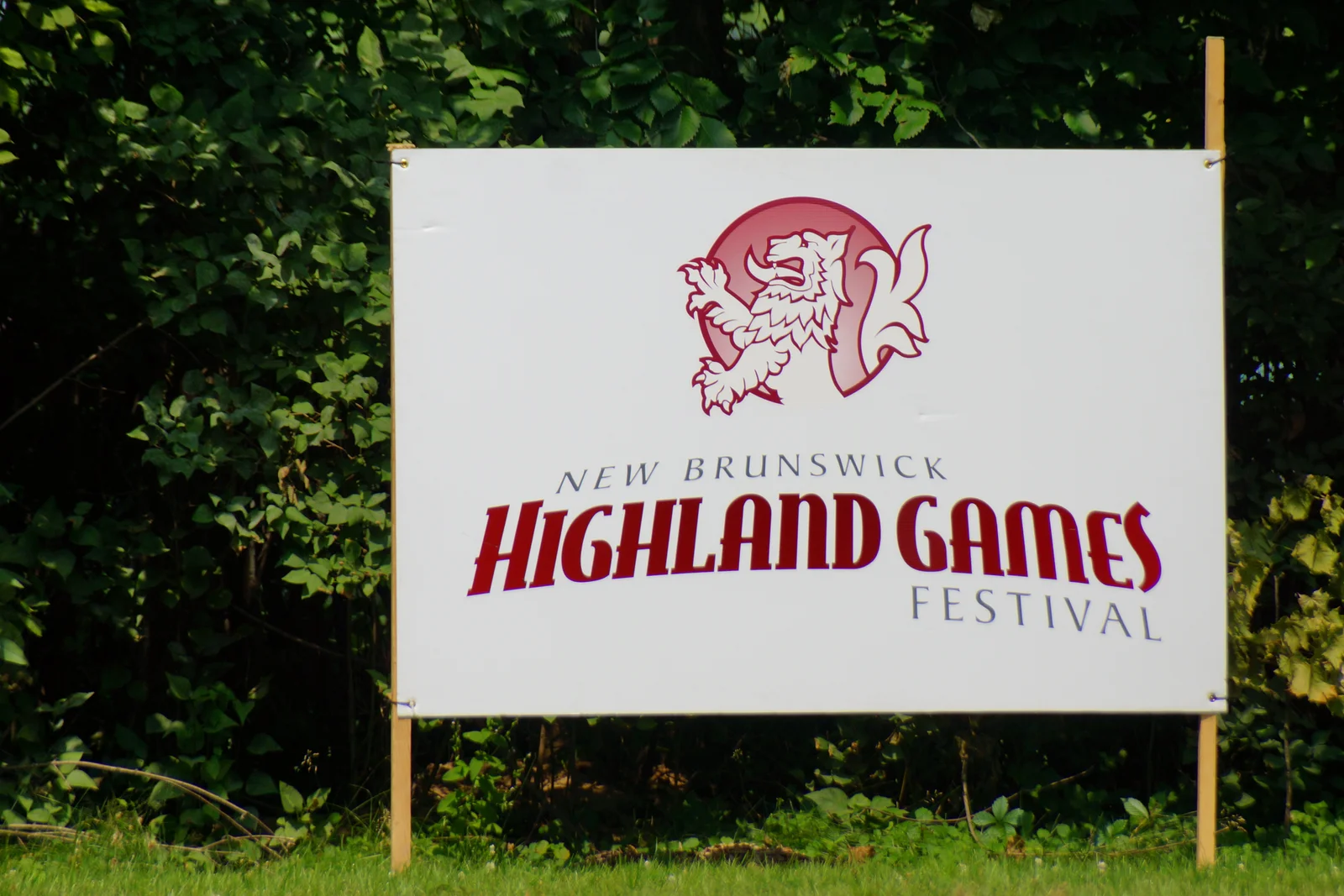
History of the New Brunswick Highland Games
The New Brunswick Highland Games is a lively celebration of Scottish heritage held every year in Fredericton, New Brunswick. The festival brings together athletes, dancers, musicians, and spectators to enjoy traditional Scottish games, music, and culture. Over the years, it has evolved into one of the most vibrant Highland Games festivals in Canada.
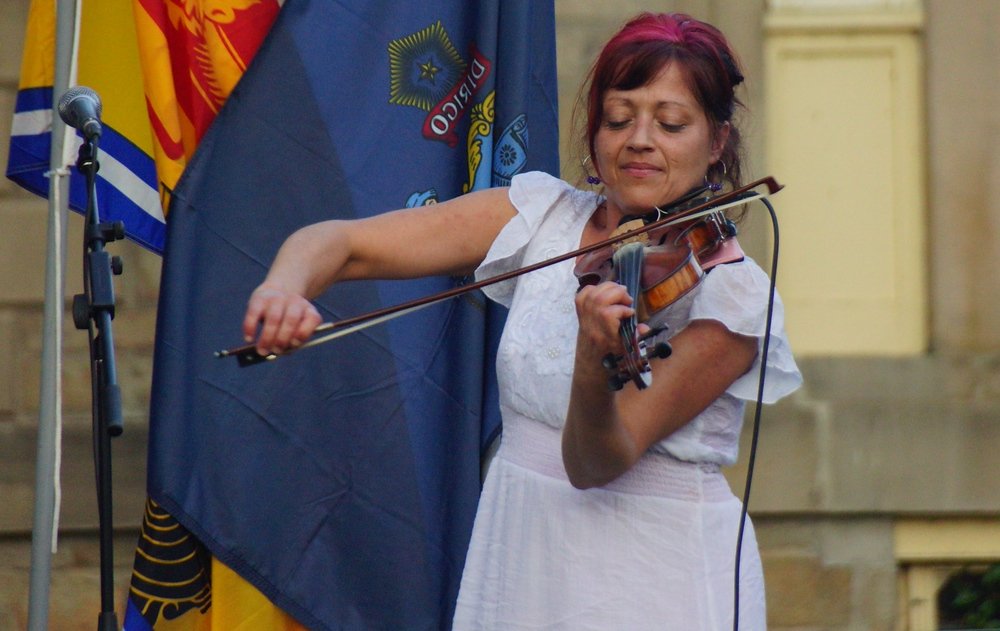
Early Beginnings
The New Brunswick Highland Games traces its roots back to the early 1980s. The event was inspired by the centuries-old Scottish Highland Games, which have been a significant part of Scottish history since the 11th century. These traditional games were originally a way for Scottish clans to demonstrate the strength, agility, and skill of their warriors. In Fredericton, a group of local Scots wanted to recreate these competitions, not just as a sport, but as a way to celebrate Scottish culture.
The first official New Brunswick Highland Games took place in 1981, and though it started small, it quickly gained popularity. The blend of athleticism, tradition, and community spirit caught on. By the 1990s, the event had become one of the major cultural festivals in the region, drawing athletes and participants from across North America.
Historical Milestones:
- The first Games in 1981 set the stage for future growth.
- By 1995, the Games attracted international attention, bringing competitors from Scotland, Canada, and the U.S..
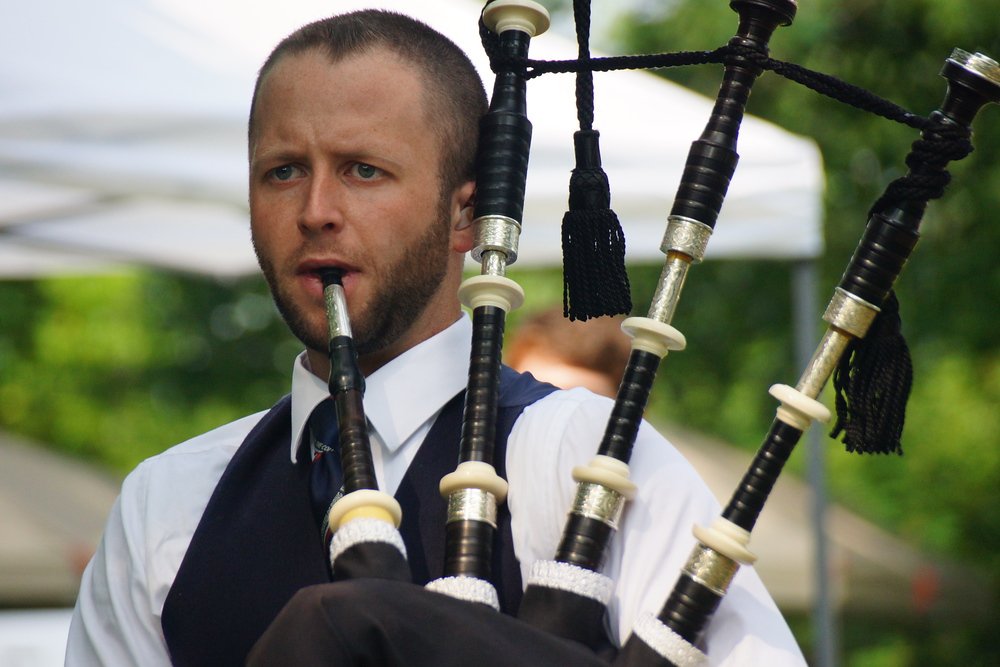
The Importance of Highland Games
The Highland Games are much more than just athletic competitions. They are deeply rooted in Scottish culture and were historically used to test the strength of Scottish warriors and choose the fittest men to lead their clans. Events like the caber toss, where athletes flip a large wooden log, or the hammer throw, are examples of the feats of strength that are still celebrated today.
At the New Brunswick Highland Games, the tradition continues with events such as:
- The Caber Toss: Competitors must flip a 19-foot, 175-pound log, requiring balance, power, and skill.
- The Hammer Throw: Athletes swing a heavy hammer around their heads and release it as far as possible.
- The Stone Put: Similar to modern shot put, but using a heavy stone, this event tests both strength and technique.
Quick Facts:
- The caber toss is one of the most iconic events and requires both strength and precision.
- The stone put predates modern shot put events and remains a favorite among competitors.

A Modern-Day Celebration of Scottish Culture
Today, the New Brunswick Highland Games is a three-day festival held every year in July, located on the beautiful grounds of Government House in Fredericton. The festival is a blend of athletic competition, music, dance, and cultural activities. Thousands of visitors attend each year, making it one of the largest cultural celebrations in the province.
Aside from the sporting events, the Games feature:
- Pipe and Drum Competitions: The sounds of bagpipes fill the air as musicians compete for titles. It’s an emotional and powerful display of Scottish musical heritage.
- Highland Dancing: A mix of grace and athleticism, this form of traditional dance has its roots in Scottish history and is one of the festival’s highlights.
- Cultural Workshops: Visitors can immerse themselves in Scottish genealogy, learn the Gaelic language, and even try their hand at Scottish crafts.
There’s plenty of opportunity to enjoy traditional Scottish cuisine as well. Food stalls offer haggis, shortbread, and Scotch pies, giving visitors a taste of Scotland. For many attendees, the cultural elements of the festival are just as important as the competitions.
Tip: Don’t miss the mass band performance at the end of each day, when all the pipe bands come together for a powerful and moving finale.
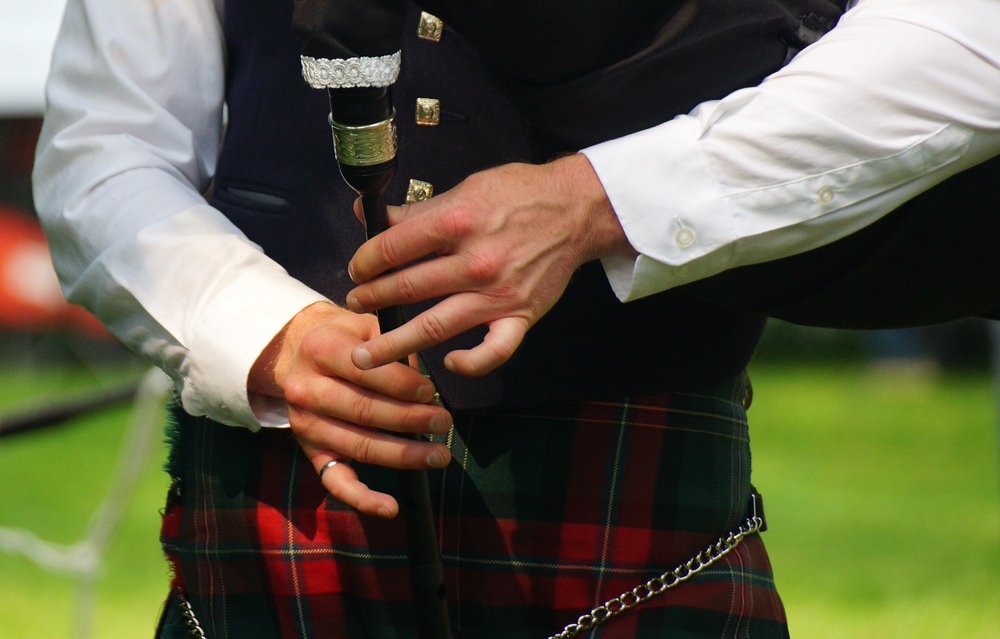
Why the New Brunswick Highland Games Matter
The New Brunswick Highland Games hold deep significance for the Scottish community in New Brunswick. The event is not only a chance to celebrate Scottish traditions but also a way to pass on these traditions to the next generation. For many, the Games are a connection to their ancestral roots, providing an opportunity to explore their heritage and feel a sense of pride in their Scottish background.
The festival also plays an important role in the broader cultural landscape of New Brunswick, showcasing the diverse influences that shape the province. Scottish culture has left a lasting mark on the region, and the Highland Games provide an opportunity for both locals and visitors to connect with these traditions.
Why You Should Visit:
- The festival offers an immersive experience in Scottish culture, from the athletic events to the music and dance.
- It’s a family-friendly event with plenty to see and do for all ages.
- The opportunity to witness traditional Highland Games competitions up close is both exciting and educational.
Tip: Arrive early to catch the opening ceremonies and stay for the caber toss, which is one of the festival’s most thrilling events.
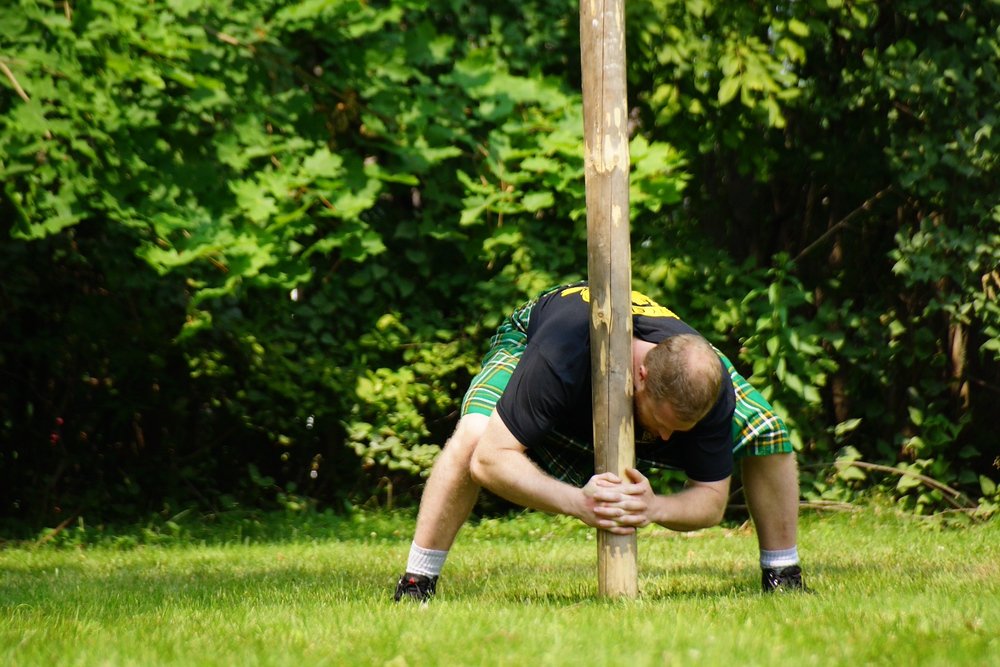
Highland Games in Fredericton, Canada

Athletics Field: Heavy Events
The athletics field featured heavy events – what many consider to be the most integral part of the whole Highland Games. The following are the athletic events I witnessed:
Caber Toss: This was my favorite event where men lifted a long tapered pine pole upright with the intention of running forward to toss it in such a manner that it turns end over with the upper section striking the ground first. The goal is not to throw it the furthest or highest (unlike other events) but to have it situated as close to the 12 o’clock position as possible on an imaginary clock.
Scottish Hammer Throw: In the event athletes wield a round metal ball (weighing 16 to 22 pounds) attached to a shaft, feet in fixed position, with the goal or whirling it around one’s head for maximum distance.
Weight over the bar: With only one hand athletes toss a 56 pound handled weight over a horizontal bar. As the competition goes on, and as athletes drop out, the bar is raised higher until only one man is left standing.
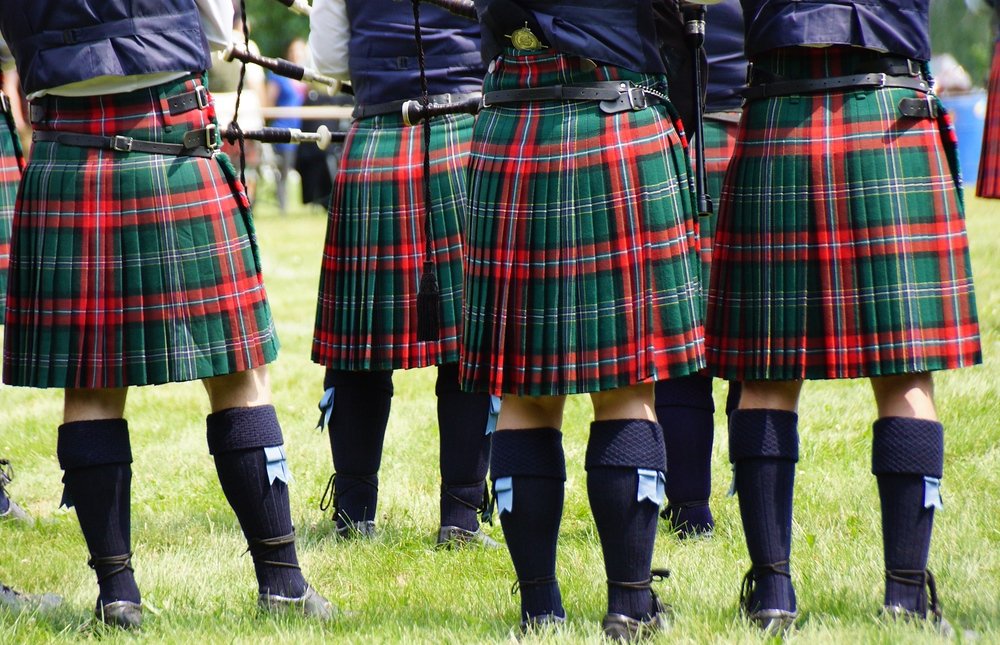
The athletics were my favorite event at the Highland Games; however, coming in at a close second was the piping and drumming competitions. The bagpipes, a symbol of the games, were on fine display as were drums and other instruments. Other musicians also entertained crowds with fiddling, folk and other kinds of live musical performances.
If the heavy events were a display of brute power and athleticism, the dancing competition were a fine example of graceful coordination. It was a treat just to sit back and watch the women dance. The dancers were ultimately judged on their appearance, hand and feet positioning and execution of the intricate steps. One of the most fascinating variations was the sword dance.
As we wandered from one competition section to the next, the tents selling food caught my eye (or should I say my nose) on more than one occasion. Around noon, I finally ventured over to indulge in Haggis on a bun washed down with Irn Bru. It was the first time I had Haggis and Irn Bru since leaving Edinburgh nearly eight months ago and on a hot and humid day both tasted incredible.
Overall, it was a fun-centric three day event that I would recommend to anyone who is visiting Fredericton over the summer.
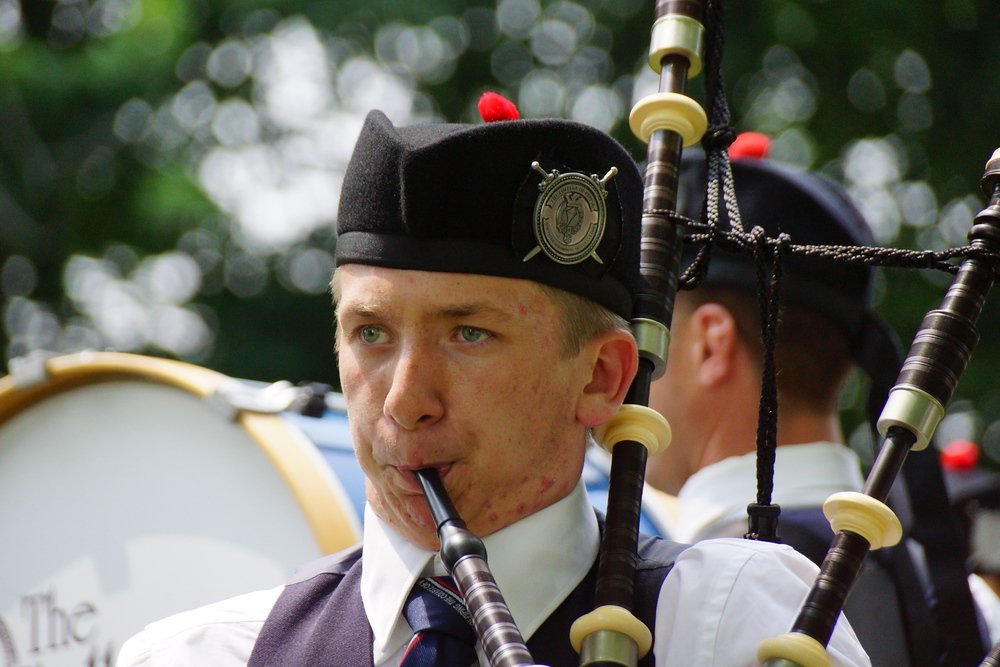
New Brunswick Highland Games: Complete Event Guide

Traditional Highland Games Competitions
Here are the key events you won’t want to miss:
- Caber Toss: One of the most iconic events, the caber toss involves flipping a massive wooden log end over end. It’s not just about strength but also balance and precision. The goal is for the caber to land straight, with the larger end hitting the ground first, and it’s one of the most anticipated events.
- Hammer Throw: In this event, competitors swing a heavy hammer around their head before releasing it for distance. It’s all about technique, and the sight of the hammer flying through the air is always a crowd favorite.
- Stone Put: A traditional version of the shot put, athletes throw a large stone as far as possible. This event tests pure upper-body strength and precision.
- Weight for Height: In this challenging event, competitors throw a heavy weight over a bar as high as possible. It requires a mix of strength and agility, and watching athletes push themselves to new heights is thrilling.
Tip: Get to the caber toss event early to secure a good view. It’s one of the festival’s most popular competitions, drawing large crowds!
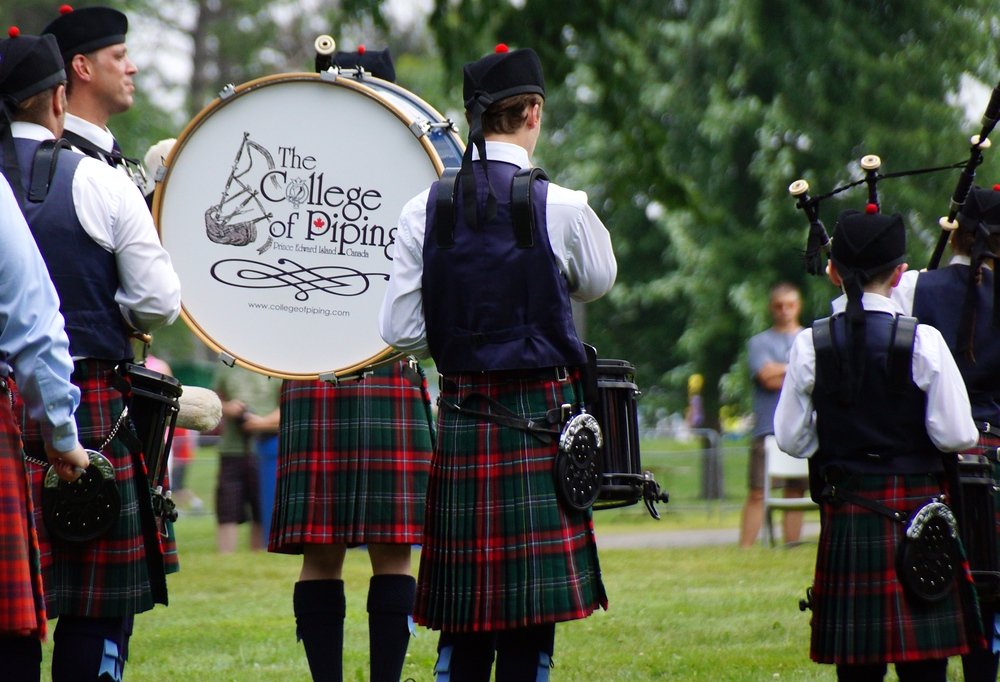
Pipe and Drum Competitions
The pipe and drum competitions are a highlight of the festival, showcasing the skill and coordination of bands from across Canada and beyond.
- Solo Competitions: Individual pipers and drummers compete for top honors in various categories. It’s an intense display of musical skill, and the haunting sound of the pipes is unforgettable.
- Band Competitions: Pipe bands compete in group performances, playing intricate arrangements of traditional Scottish tunes. The synchronization between pipes and drums is impressive and adds a grand musical backdrop to the weekend’s events.
Tip: Don’t miss the mass band performance at the end of the day, where all the pipe bands come together in a spectacular display of sound and pageantry.
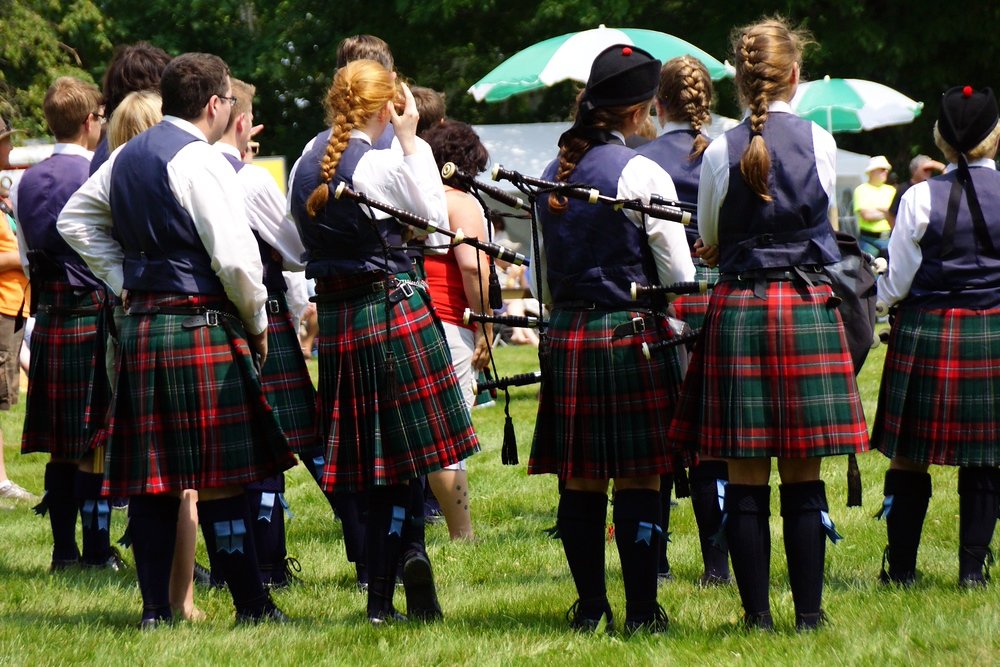
Highland Dancing
Another major attraction at the New Brunswick Highland Games is the Highland dancing competition.
- Sword Dance: One of the most iconic dances, performed with swords on the ground. Dancers must be careful not to touch the swords with their feet while executing a series of precise, rhythmic steps.
- Seann Triubhas: A lively, elegant dance representing the joy of casting off the old baggy trousers (triubhas) worn after the Jacobite Rebellion. The dance is fast-paced and features graceful legwork.
The Highland dancing competition is judged on technique, timing, and presentation, making it both a beautiful and technically demanding performance.

Cultural Activities and Workshops
Beyond the competitions, the festival offers a wide range of cultural activities and workshops that allow visitors to engage with Scottish history and heritage in a hands-on way.
- Scottish Genealogy Workshops: Explore your Scottish roots by tracing your family history. Experts are on hand to help guide you through the process of uncovering your Scottish ancestry.
- Gaelic Language Lessons: Learn some basic phrases in Scottish Gaelic, the language spoken by the Highlanders for centuries. These lessons offer a fun and educational way to connect with Scotland’s linguistic heritage.
- Celtic Craft Demonstrations: Watch artisans at work, creating traditional Scottish crafts such as weaving, tartan-making, and knitting. You can also purchase authentic Scottish goods at the vendor stalls, such as clan insignias, Celtic jewelry, and handmade kilts.
Tip: Don’t leave without exploring the workshops, where you can pick up Scottish souvenirs and learn more about the history and culture behind the Highland Games.
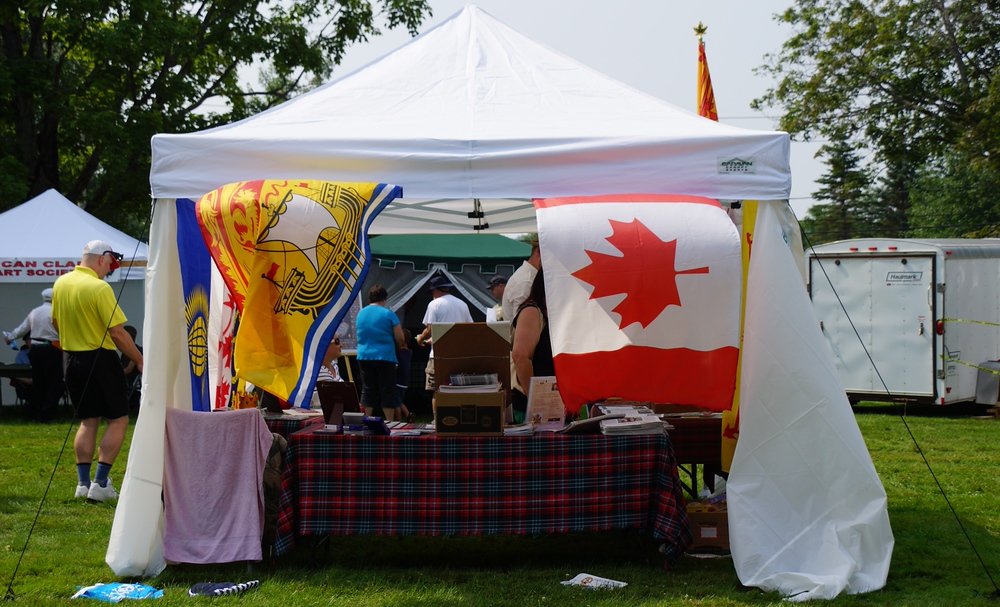
Family-Friendly Events and Food
The New Brunswick Highland Games is a family-friendly event. There are kid-friendly games, face painting, and interactive stations where children can learn about Scottish culture in a fun and engaging way.
- Traditional Scottish Foods: Sample delicious Scottish cuisine at the festival’s food stalls. From haggis to Scotch pies and shortbread, the flavors of Scotland are a must-try. The food is perfect for a quick break between events or to enjoy as you watch the competitions unfold.
The following is a photo essay of my favorite photos from the New Brunswick Highland Games:
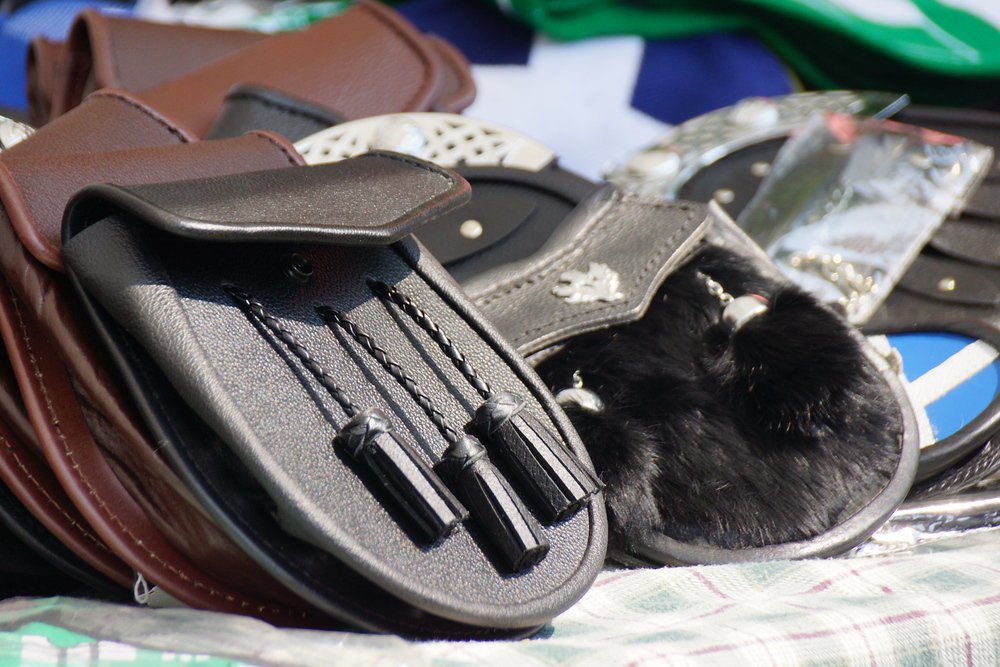

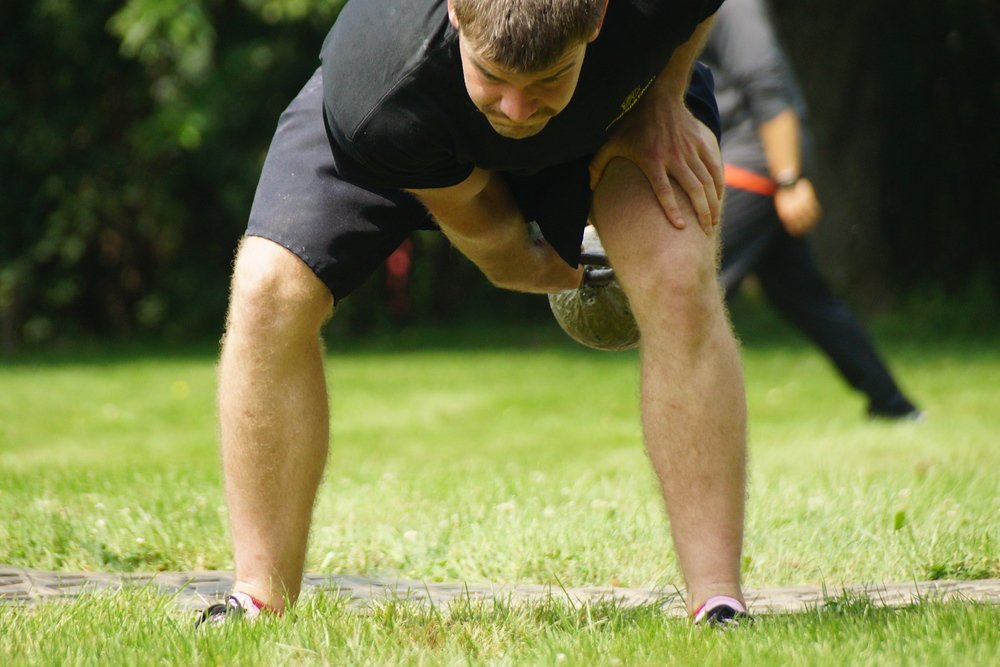
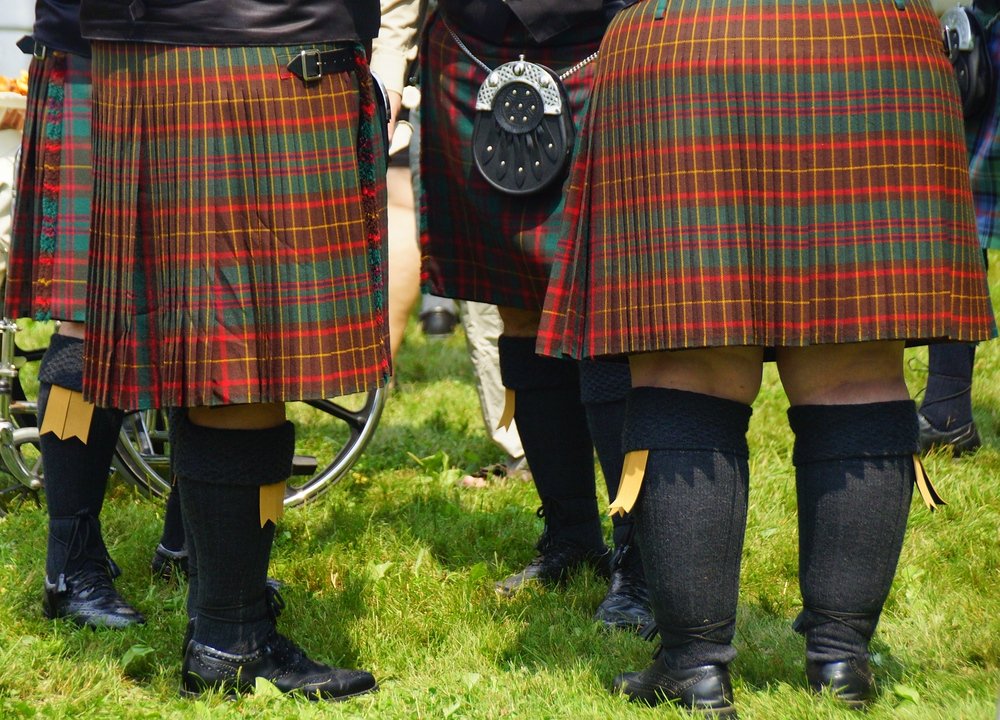
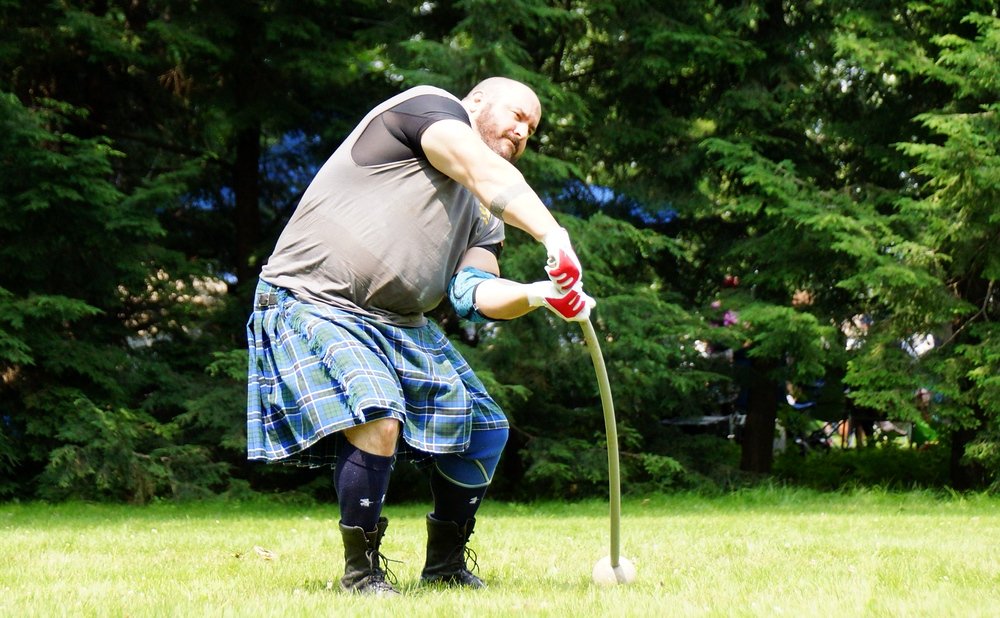
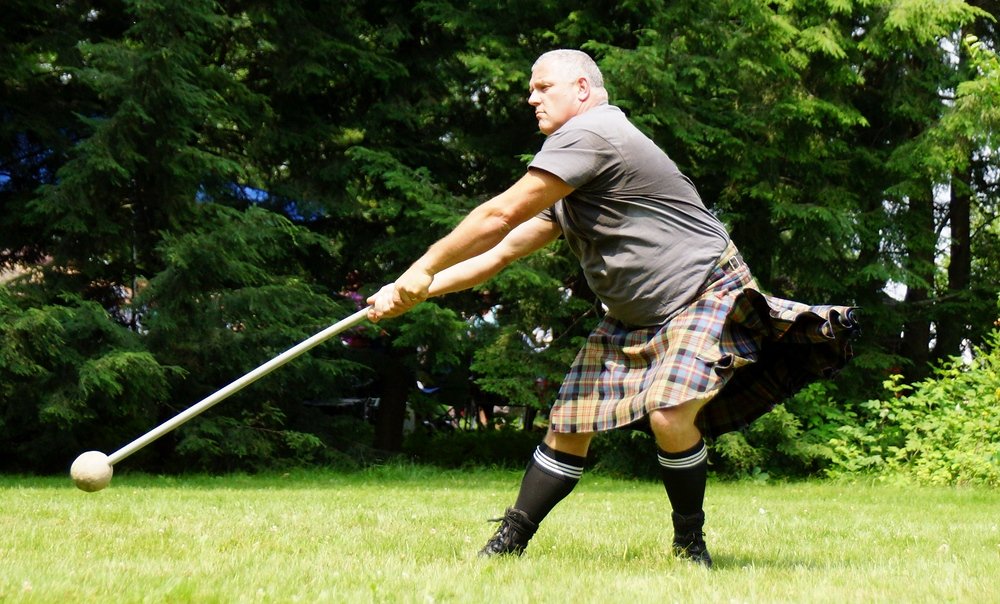
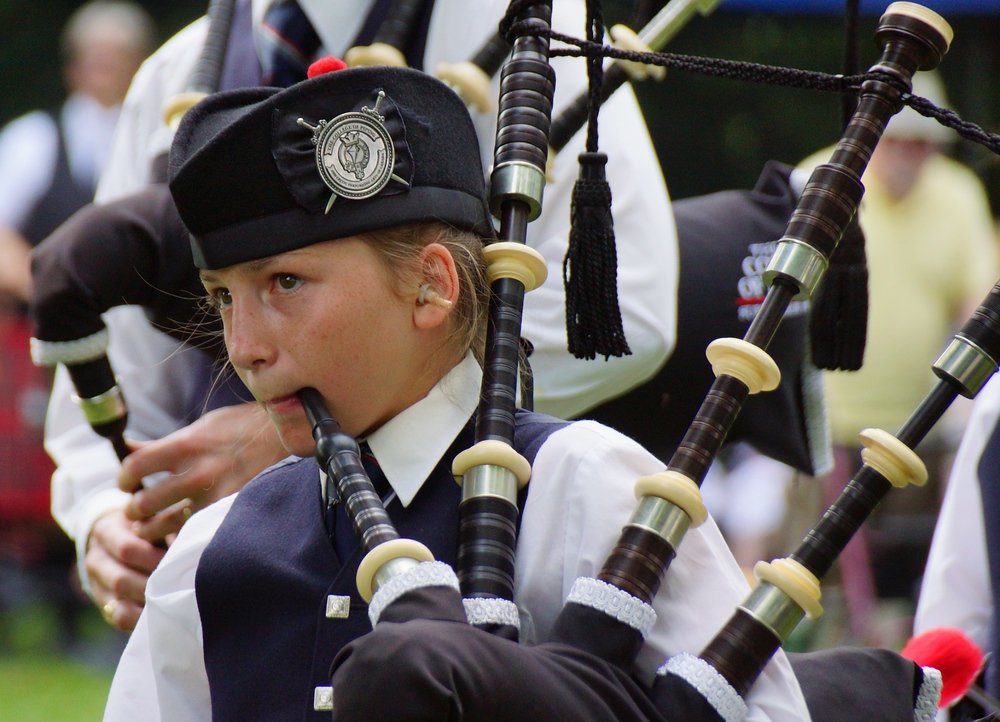
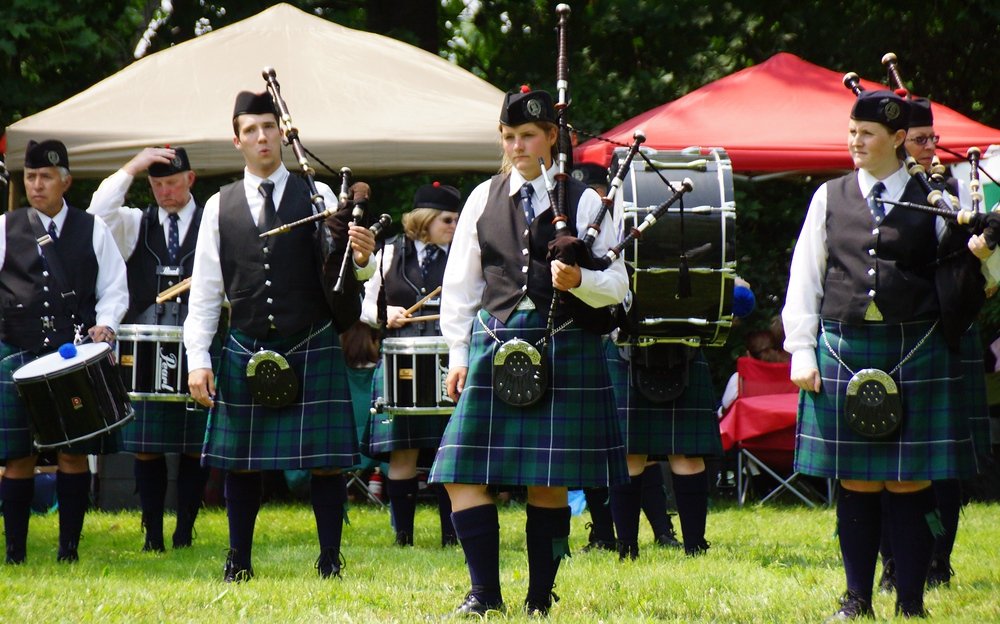

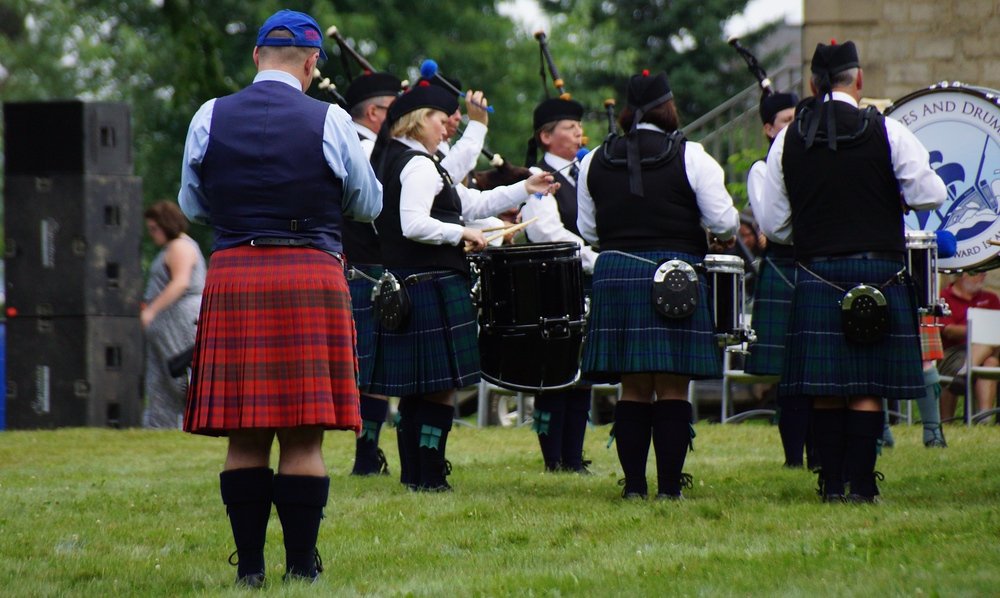



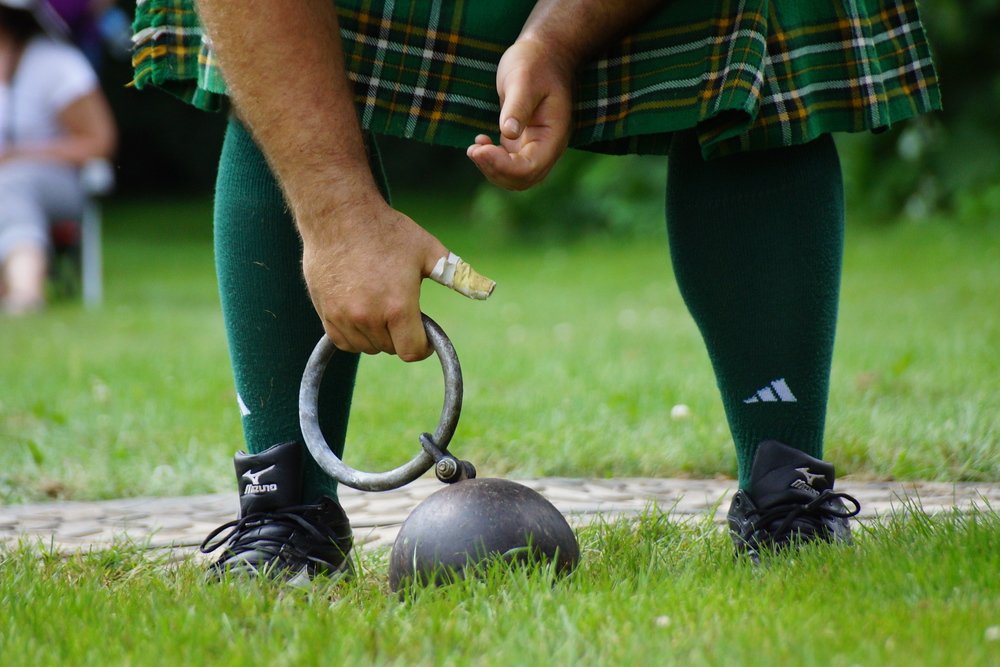


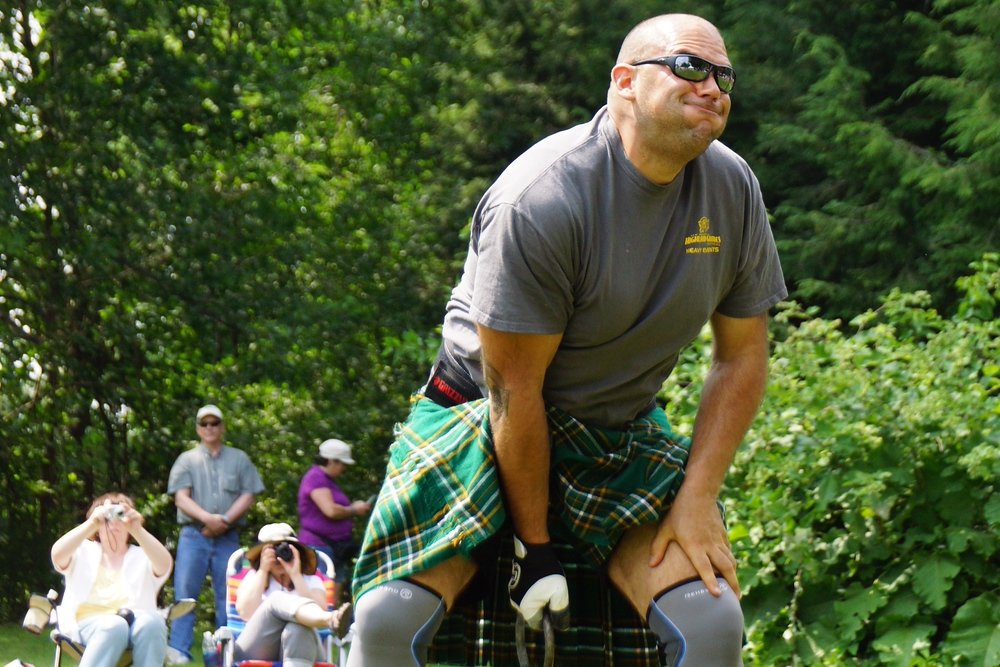
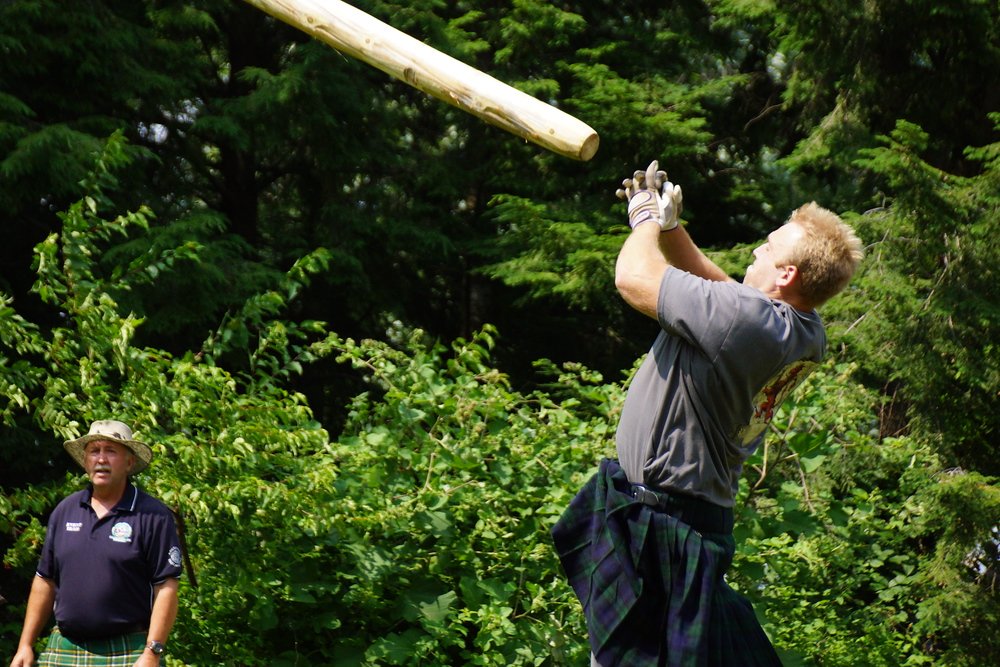

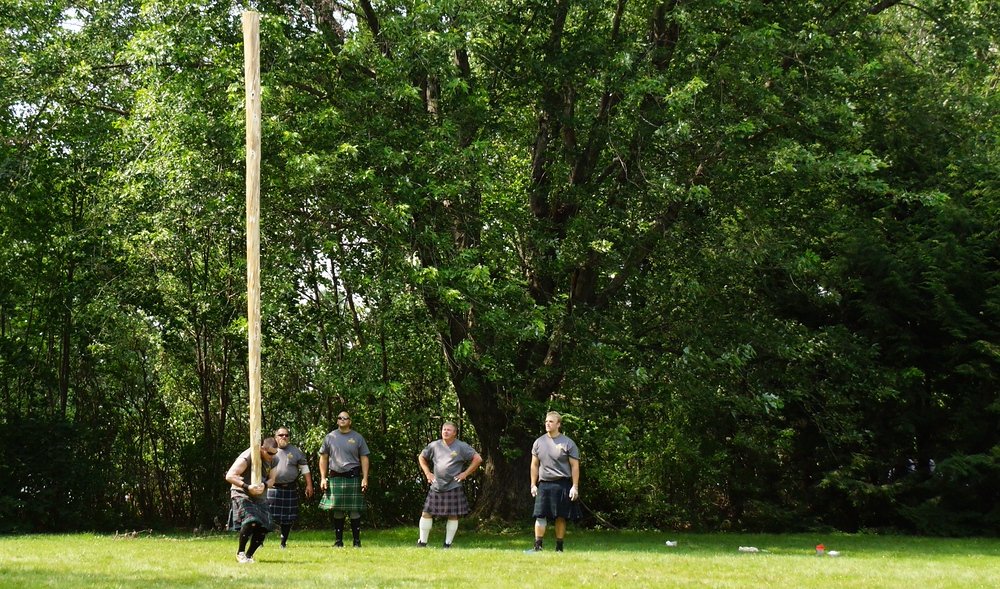
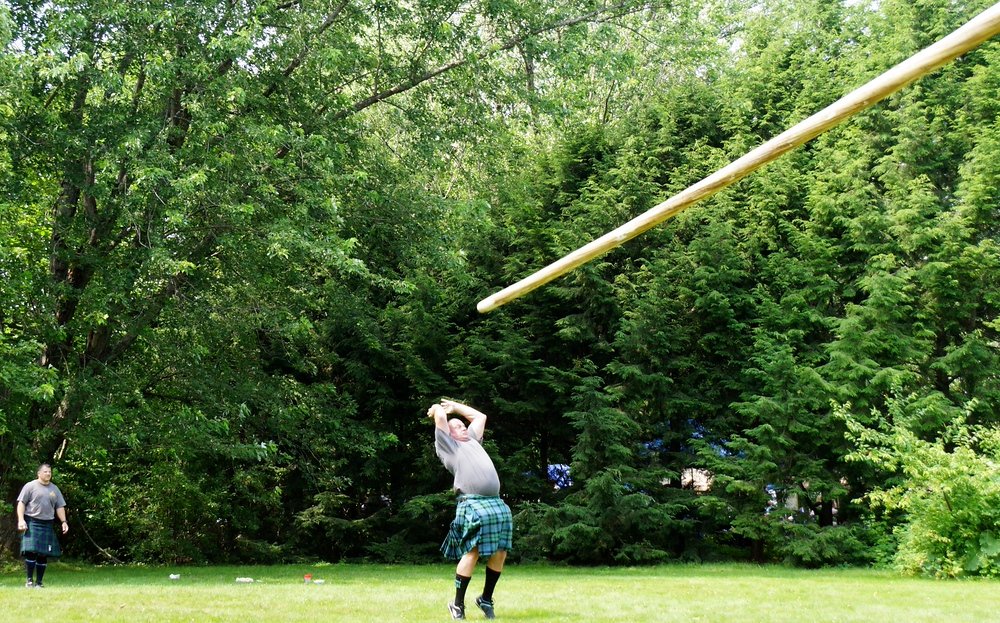
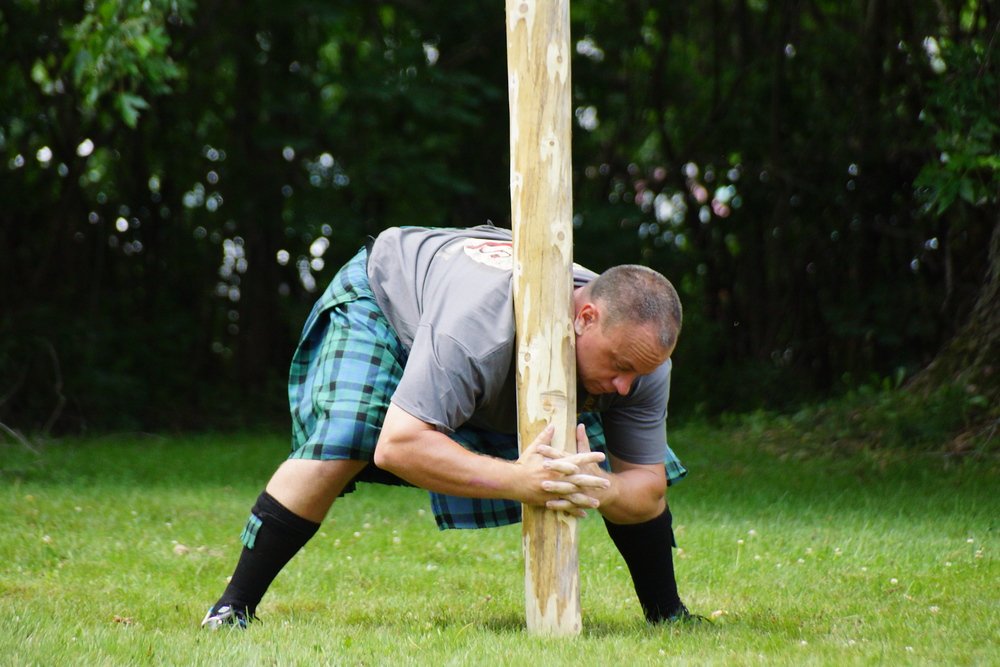
Vital Information for Visitors to the New Brunswick Highland Games
Planning to attend the New Brunswick Highland Games?
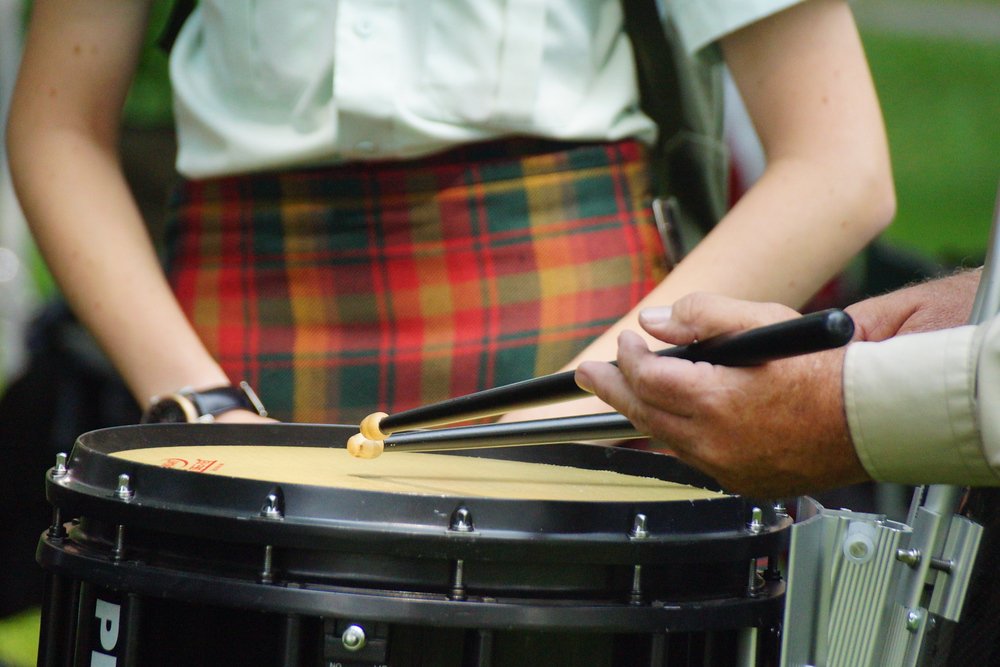
Event Location and Dates
The New Brunswick Highland Games are held annually at Government House in Fredericton, New Brunswick. The games typically take place over a weekend in late July, so make sure to check the official website for the exact dates of the next event.
- Venue: Government House, 51 Woodstock Rd, Fredericton, NB.
- Dates: Typically in the last weekend of July, with events running from Friday to Sunday.
Tip: Arrive early to beat the crowds and catch the opening ceremonies. The mornings are also the best time to get good seating near the main competition fields.

Ticket Information
Tickets for the New Brunswick Highland Games can usually be purchased online in advance or at the gate. Prices are affordable, and children often receive discounted admission.
- Adult tickets: Prices range per day, depending on whether you purchase a day pass or a full weekend pass.
- Children and seniors: Reduced prices are typically available.
- Family packages: Often, you can find discounted rates for families or groups, so keep an eye out for special promotions.
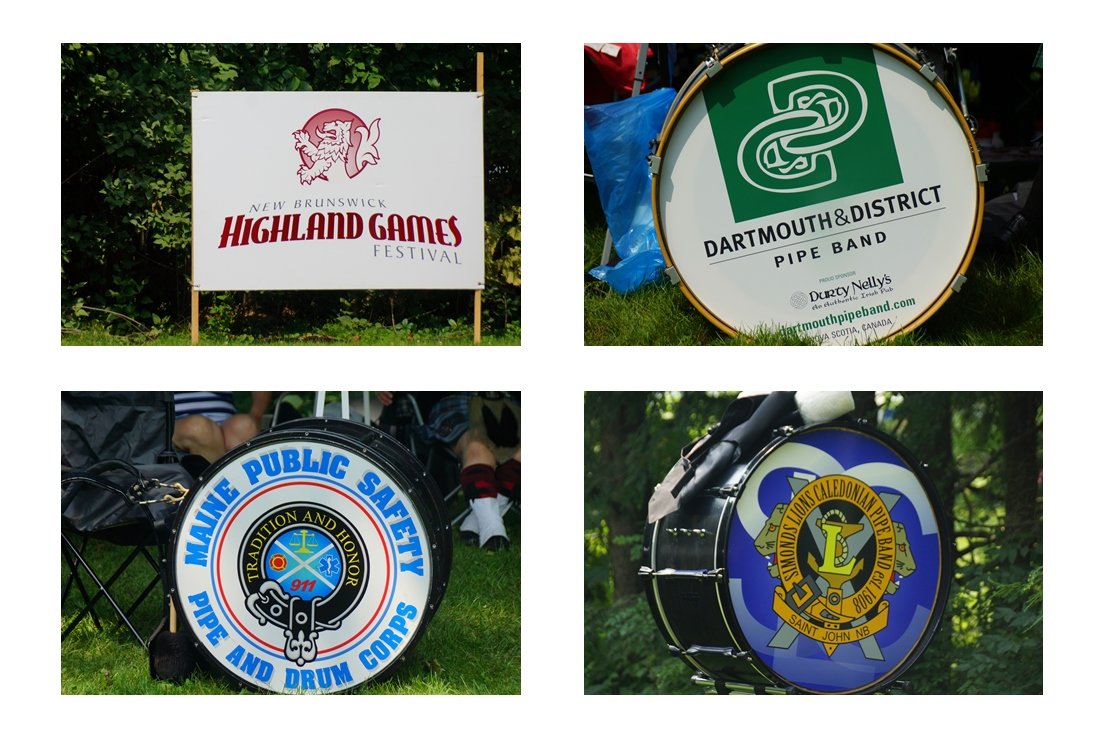
Parking and Accessibility
Parking is available near the Government House grounds, but it fills up quickly, especially during the weekend rush. If you’re planning to drive, arrive early to secure a parking spot close to the venue.
- Parking Fee: While some spots may be free, others may require a small fee depending on the proximity to the venue.
- Accessibility: The venue is wheelchair accessible, and the festival offers accommodations for those with mobility challenges. There are designated areas for seating and restroom facilities equipped for accessibility.

What to Bring
To fully enjoy the New Brunswick Highland Games, here are a few things you might want to bring along:
- Sun protection: July can be quite warm, so bring a hat, sunglasses, and sunscreen.
- Rain gear: The event takes place rain or shine, so it’s a good idea to pack a light jacket or umbrella just in case.
- Cash: While many vendors accept credit or debit cards, some stalls, particularly for food or local crafts, may prefer cash payments.
- Camera: There are plenty of photo opportunities, from the athletic events to the pipe and drum performances, so don’t forget to capture the memories!
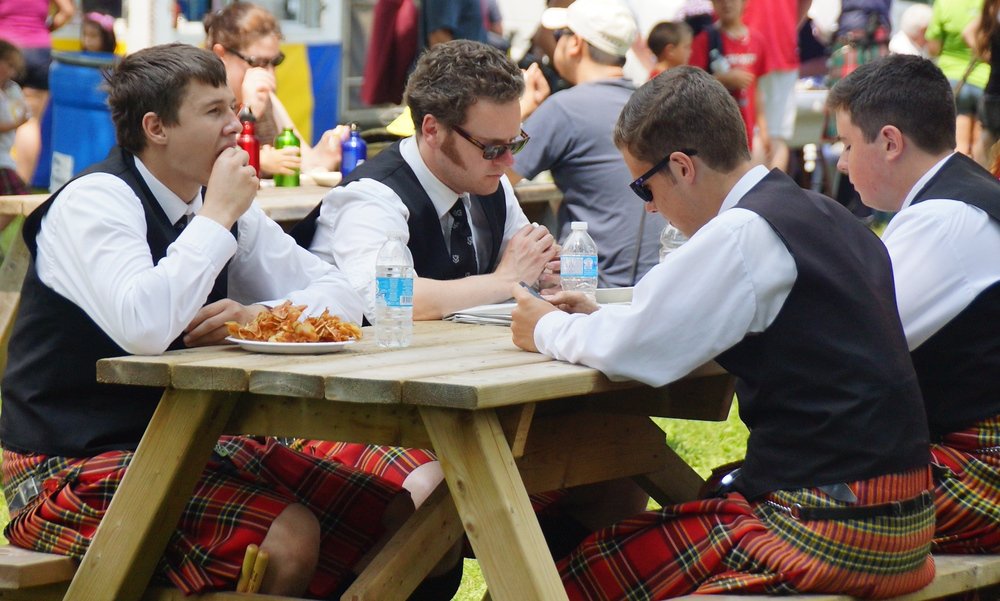
Food and Drink
Be sure to sample traditional Scottish dishes like haggis, Scotch pies, and shortbread. There are also beer tents featuring local craft brews and traditional Scottish ales.
- Food options: From quick snacks to hearty meals, there’s something for every taste at the festival.
- Picnic option: Many visitors also bring their own picnics and enjoy meals in the scenic surroundings of Government House.
Tip: Try some haggis for a truly authentic Scottish culinary experience!

New Brunswick Highland Games Final Thoughts
I absolutely loved attending the New Brunswick Highland Games!
I think it’s the type of event that is great fun and the perfect excuse to get together with friends and family.
I’m hoping to have the opportunity to attend games all over the world.





So much fun! I went to the Maxville Highland Games before. Such a great day out. Great photos man.
like this post thank for sharing this.
Haha sounds like an absolute blast (I can imagine it being slightly comical to watch as well..) Loved the photos
haha that games look awesome! I a couple with I went to Scotland, but nothing to that extent.
Wow, I wish we had that kind of festival too! Great pictures by the way. 🙂
Definitely want to attend one of these sometime. The caber toss is crazy!
whoa! Those are some burly men in skirts. Crazy stuff. Yeah, I can imagine how it is dangerous for spectators. Glad you didn’t get struck by a flying caber.
Just wondering why there aren’t any pictures of the wonderful ladies that had their competition on Sunday….
Hi Karolyn,
I wasn’t able to attend the games on Sunday unfortunately; otherwise, I would have snapped plenty of photos of them competing in the athletic events.
Those guys are huge and just the buddies I would want to take bar hopping with me! Oh, I don’t bar hop. Anyhoo, what massive strength! But, one thing…I tend to not always be the most coordinated of individuals despite being a good athlete in school. That heavy ball being swung between the legs would portend of disaster for me, Samuel! 🙂
Great photos! You can really see how difficult some of those objects must be to lift. My ancestors are Scottish and my dad’s part of our state’s pipe band and they piped us into our wedding reception – it was LOUD! 🙂
That is cool Carmen! I love the sound of bagpipes and that must have made your wedding extra special.
Brilliant photos – this is definitely on our list to see.
Thank you! We’d definitely recommend it.
This looks like a really fun event to witness, I love all your detailed shots, you really captured the essence of the event and games.
Thanks Noel! We had a blast being there 🙂
Great games and holy cow they take some muscle and balance… scrolled all the way through 3x Sam, but no pics of you in your kilt.
What’s up with that?
Hahaha…I’m blaming it on a wardrobe malfunction 😉
Awesome festival … reminds of the Highland Games in Antigonish near where I grew up (and where I am until August 20) … I think I also saw a bar stamp from Dolan’s (best pub music in Fredericton by the way) on the hand of one of the bagpipe players, haha! 🙂
The winner of the event in Fredericton, Matt Doherty, had also just won the Antigonish games 🙂 That’s cool to know about Dolan’s! I’ll have to take Audrey out for a drink there before we leave in a couple of days 🙂